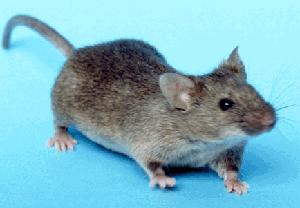Theria facts for kids
Quick facts for kids TheriaTemporal range: Lower Cretaceous – Today
|
|
|---|---|
 |
|
| A house mouse, Mus musculus | |
| Scientific classification | |
| Kingdom: | |
| Phylum: | |
| Class: | |
| Subclass: |
Theria
|
| Infraclasses | |
Theria is a special group of mammals. It includes all mammals that give birth to live babies. These babies do not come from a shelled egg, like a bird's egg.
Theria are different from other mammals called monotremes. Monotremes, like the platypus, lay eggs. Theria, however, have their babies grow inside the mother's body.
Contents
What Are Theria?
Theria is a scientific word for a large group of mammals. It means "wild beasts." This group includes most of the mammals we know today. They have special ways of having and raising their young.
How Theria Are Different
The main thing that makes Theria special is how they reproduce. Instead of laying eggs, Theria mothers carry their babies inside them. The babies develop there until they are ready to be born. This is a very successful way for mammals to have offspring.
Main Groups of Theria
The Theria group is divided into two main parts. These are called infraclasses. They are the Metatheria and the Eutheria. Both groups give birth to live young, but they do it in slightly different ways.
Metatheria: The Marsupials
The only Metatheria that are still alive today are the marsupials. You might know marsupials like kangaroos, koalas, and opossums.
- Born Early: Marsupial babies are born very small and not fully developed.
- Pouch Life: After birth, they crawl into a special pouch on their mother's belly. They stay there to grow and drink milk.
- Examples: Kangaroos, wallabies, koalas, wombats, and opossums are all marsupials.
Eutheria: The Placental Mammals
The Eutheria group includes all the placental mammals. This is the largest group of mammals. Humans, dogs, cats, elephants, and whales are all placental mammals.
- Longer Development: Placental babies develop for a longer time inside the mother. They get food and oxygen through a special organ called the placenta.
- More Developed at Birth: Because they develop longer inside, placental babies are usually more developed when they are born. They do not need a pouch to finish growing.
- Examples: Most mammals you see every day are placental mammals. This includes pets, farm animals, and many wild animals.
History of Theria
Scientists believe that the first Theria appeared a very long time ago. This was during the Lower Cretaceous period. That means they have been around for over 100 million years! Over time, they have evolved into many different shapes and sizes. They have adapted to live in almost every environment on Earth.
See also
 In Spanish: Terio para niños
In Spanish: Terio para niños

